PHÂN BỐ TYPE HUYẾT THANH, TÌNH HÌNH KHÁNG KHÁNG SINH VÀ ĐẶC ĐIỂM PHÂN TỬ CỦA CÁC CHỦNG STREPTOCOCCUS PNEUMONIAE GÂY BỆNH PHẾ CẦU KHUẨN XÂM LẤN Ở MỘT SỐ BỆNH VIỆN MIỀN BẮC VIỆT NAM
Nội dung chính của bài viết
Tóm tắt
Mục tiêu: Nghiên cứu này nhằm mục tiêu xác định các type huyết thanh của Streptococcus pneumoniae phân lập từ bệnh nhân nhiễm phế cầu khuẩn xâm lấn tại một số bệnh viện miền Bắc Việt Nam từ năm 2014 đến 2023 và xác định một số đặc tính sinh học phân tử, tính kháng kháng sinh của các chủng S. pneumoniae trong nghiên cứu này. Đối tượng và phương pháp nghiên cứu: Nghiên cứu mô tả cắt ngang, thu thập 80 chủng phế cầu khuẩn xâm lấn trong thời gian từ năm 2014 đến năm 2023 tại một số bệnh viện miền Bắc Việt Nam. Độ nhạy cảm với kháng sinh của các chủng S.pneumoniae được thực hiện bằng phương pháp khoanh giấy khuyếch tán và E-test. Giải trình tự bộ gen thực hiện bằng công nghệ Illumina Miseq. Kết quả: Trong 80 chủng phế cầu xâm lấn, có 22 type huyết thanh được xác định và các type huyết thanh phổ biến nhất là: 9V, 19A, 3, 23F, 19F, 11A, 14, 6B/6E, 15A chiếm 71.3% tổng số chủng. Bảy trong số 9 type huyết thanh này được bao phủ bởi vắc xin PCV13. Chúng tôi cũng tìm thấy 42 trình tự MLST khác nhau, trình tự phổ biến nhất lần lượt là: ST10120, ST320, ST180, ST63, ST271, ST166. Các chủng phế cầu đều nhạy cảm với levofloxacin, tỷ lệ chủng đa kháng cao (90%), tỉ lệ không nhạy cảm cao với: erythromycin (92.5%), clindamycin (92.5%), tetracycline (88.8%), trimethoprim sulfamethoxazole (73.8%). Gen ermB là kiểu gen kháng erythromycin, clindamycin phế cầu phổ biến nhất (91.3%). Kết luận: Chủng S. pneumoniae gây phế cầu khuẩn xâm lấn có nhiều type huyết thanh và dòng khác nhau, tỷ lệ đa kháng, kháng erythromycin, clindamycin và tetracyline cao.
Chi tiết bài viết
Từ khóa
Type huyết thanh, phế cầu khuẩn xâm lấn, kháng kháng sinh, Streptococcus pneumoniae
Tài liệu tham khảo
2. Jauneikaite E, Jefferies JM, Hibberd ML, Clarke SC. Prevalence of Streptococcus pneumoniae serotypes causing invasive and non-invasive disease in South East Asia: a review. Vaccine. 2012;30(24):3503-3514. doi:10.1016/ j.vaccine.2012.03.066
3. Kim SH, Song JH, Chung DR, et al. Changing trends in antimicrobial resistance and serotypes of Streptococcus pneumoniae isolates in Asian countries: an Asian Network for Surveillance of Resistant Pathogens (ANSORP) study. Antimicrob Agents Chemother. 2012;56(3):1418-1426. doi:10.1128/AAC.05658-11
4. Opavski N, Jovicevic M, Kabic J, et al. Serotype distribution, antimicrobial susceptibility and molecular epidemiology of invasive Streptococcus pneumoniae in the nine-year period in Serbia. Front Microbiol. 2023;14:1244366. doi:10.3389/fmicb.2023.1244366
5. Parry CM, Duong NM, Zhou J, et al. Emergence in Vietnam of Streptococcus pneumoniae Resistant to Multiple Antimicrobial Agents as a Result of Dissemination of the Multiresistant Spain23F-1 Clone. Antimicrob Agents Chemother. 2002;46(11):3512-3517. doi:10.1128/AAC.46.11.3512-3517.2002
6. Song JY, Nahm MH, Moseley MA. Clinical Implications of Pneumococcal Serotypes: Invasive Disease Potential, Clinical Presentations, and Antibiotic Resistance (1). J Korean Med Sci. 2013;28(1):4. doi:10.3346/jkms.2013.28.1.4
7. Clinical and Laboratory Standards Institute (2024), Performance standards for antimicrobial susceptibility testing, CLSI supplement M100. ttps://pid-el.com/wp-content/uploads/2024/07/ CLSI-M100.pdf.
8. ECDC (2018). Invasive pneumococcal disease - Annual Epidemiological Report for 2018. https://www.ecdc.europa.eu/en/publications-data/invasive-pneumococcal-disease-annual-epidemiological-report-2018


